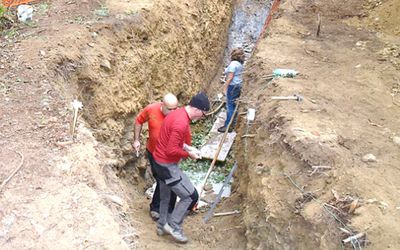The Institute of Geosciences and Earth Resources of Florence, as part of the agreement with the Tuscany region for the study of active and capable faults, and in collaboration with researchers from the Institute for Environmental Protection and Research (ISPRA), has opened a paleoseismological trench in Lunigiana. The trench was excavated transversely to the Mulazzo fault, near Pontremoli, in order to analyse the seismic history of the fault and to assess its seismic-tectonic potential, for the understanding of the fault’s state of activity and its ability to propagate the tectonic dislocation to the topographic surface (capable fault).
The excavation area was identified following geological-structural analysis and morpho-tectonic observations, integrating remote sensing and DTM analysis with field surveys. The excavation, which reached a depth of over three meters, for a length of about 30 meters, benefited from the logistical support of the Municipality of Mulazzo. The walls of the excavation, after being equipped with a reference grid, were reproduced in their stratigraphic, sedimentological characteristics, describing with particular attention the dislocation of the identified levels and the dislocation surfaces (faults). Some fragments of coal and organic material, suitable for dating with radiocarbon C14 analysis, were collected on the trench walls, and were dated at the CEnter of DAting and Diagnostics of the University of Salento (CEDAD).
In addition, a high-resolution shallow seismic reflection profile was carried out, which allowed to extrapolate in depth the results observed in the trench and to visualize the continuity of the tectonic structure to a depth of about 30 meters below the ground level.
The study is still in the definition phase, but the first results clearly indicate that the Mulazzo fault is an active and capable fault, which in the last 1800 years or so has produced surface faulting, accumulating a significant vertical reject. These elements are innovative in the knowledge of the active tectonics of Lunigiana and allow to formulate a better estimate of the seismic hazard of the region.
For more information please contact luigi.piccardi@igg.cnr.it.
